#atoms
Text

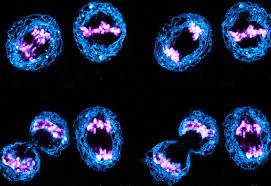
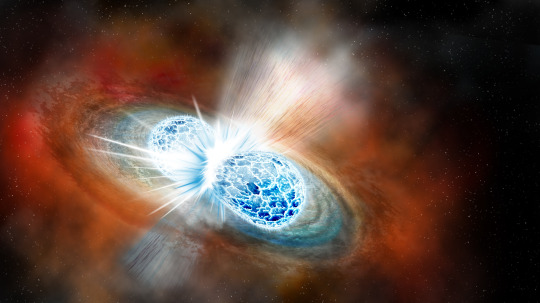



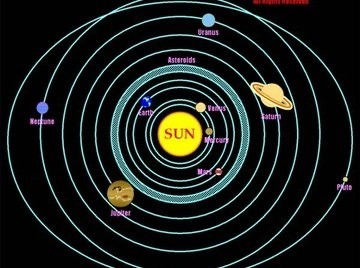






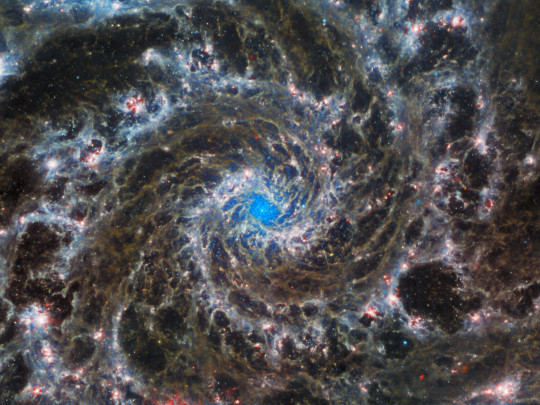







Infinite in Both Directions
@sketiana // cells undergoing mitosis // neutron stars colliding // 'saturn', sleeping at last // voyager golden records // diagram of an atom // diagram of the solar system // 'a toast to the alchemists', laura giplin // neural stem cells // ciliated ventral epithelium // 'constellations', the oh hellos // jwst deep field // 'singularity', marie howe // heart of the phantom galaxy // 'zephyrus', the oh hellos // apoferritin // aerial view of a forest // a graph me and my project co-chair made to model angle over time of our payload // molybdenum and sulfur atoms // unknown // pillars of creation
#web weave#webweave#space#infinity#atoms#idk. i'm so normal about this.#somehow we're right in the middle
10K notes
·
View notes
Text
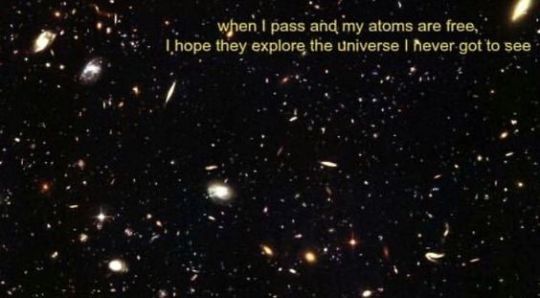
437 notes
·
View notes
Photo

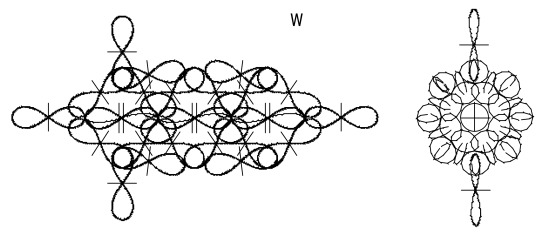

Periodic table of atomic nuclear structures (according to BSM-SG), Atlas of Atomic Nuclear Structures, Stoyan Starg
2K notes
·
View notes
Text

Appeal to Reason, Kansas, October 8, 1904
1K notes
·
View notes
Text
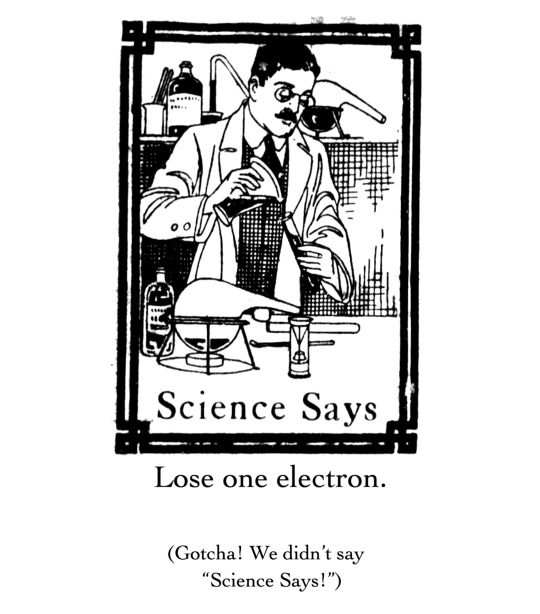
126 notes
·
View notes
Text
writing my chemistry paper on an aluminium alloy bc i thought it would be easy peasy lemon squeezy but it's actually difficult difficult lemon difficult
#study#study notes#studying#study blog#studyblr#study motivation#studyinspo#studyspo#study aesthetic#academia#chemistry#stem#chemical reactions#science#atoms
71 notes
·
View notes
Text

What an isotope is. Annual report of the Board of Regents of the Smithsonian Institution. 1953.
Internet Archive
293 notes
·
View notes
Text
The Periodic Table - Chemistry
The chemical symbols are shown in the periodic table, where all the elements are displayed in order of atomic number (the number of protons in the nucleus of an atom)
The elements in the table are arranged in columns called groups - each group contains elements with similar chemical properties
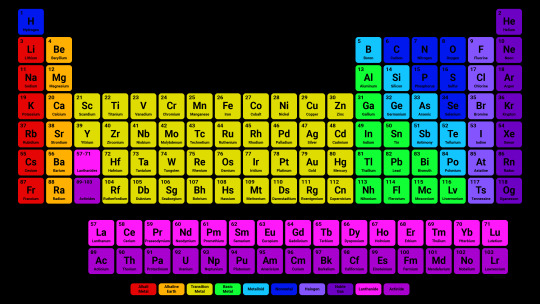
Zoom in on the image - the elements are colour-coded - you'll see which elements are metals, metalloids, non-metals and more!
#periodic table#elements#chemical symbols#chemistry#atoms#metals#non-metals#metalloids#science#study notes
150 notes
·
View notes
Text

scopOphilic_micromessaging_892 - scopOphilic1997 presents a new micro-messaging series: small, subtle, and often unintentional messages we send and receive verbally and non-verbally.
#scopOphilic1997#scopOphilic#digitalart#micromessaging#streetart#graffitiart#graffiti#brooklyn#nyc#photographers on tumblr#original photographers#ArtistsOnTumblr#2023#DAVE#Felix The Cat#Zore#Done#ATOMS#ZORE64#purple#red#yellow#orange#truck
72 notes
·
View notes
Text
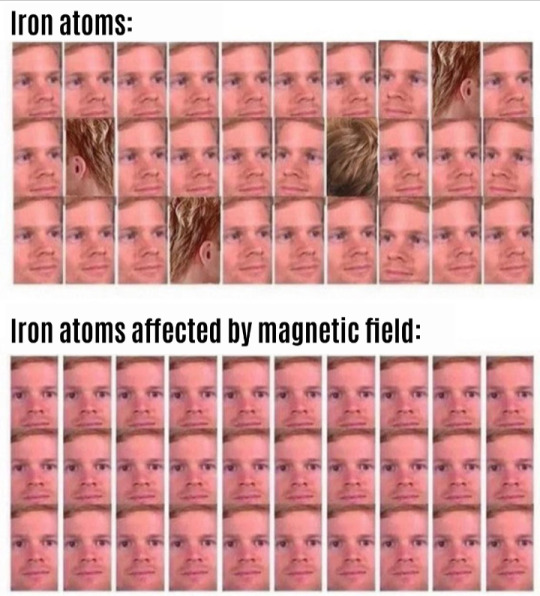
#i feel like i'm being watched#physics#chemistry#atoms#magnetism#magnetic field#nerdy meme#nerd humour#memes
73 notes
·
View notes
Text

Rb(Rubidium)
No.37
Group 1
He | Him
———

#ATOMS#Rb#rubidium#ATOMS story#ATOMS comics#periodic table#elements#chemistry#science#character#oc#illustration#digital painting#procreate#web comics#webcomic#web comic#chibi art#character design
81 notes
·
View notes
Text
These tiny particles are the basis on which all normal matter is built (including our bones), and understanding them helps us understand the larger Universe.
We currently use high-energy X-ray light to help us understand atoms and molecules and how they're arranged, catching diffracted beams to reconstruct their configurations in crystal form.
Now, scientists have used X-rays to characterize the properties of a single atom, showing that this technique can be used to understand matter at the level of its tiniest building blocks.
Continue Reading
245 notes
·
View notes
Photo

Fig. 5. Selected elements from the Atlas of Atomic Nuclear Structures
Sarg, Stoyan. “New approach for building of unified theory about the Universe and some results.” arXiv: General Physics (2002): n. pag.
1K notes
·
View notes
Text

Stability of rings of atoms in glass materials can help predict performance of glass products
Glass is being used in a wider range of high-performance applications, including those for consumers and industry, military and aerospace electronics, coatings and optics. Because of the extreme precision demanded for use in products such as mobile phones and jet aircraft, glass substrates must not change their shape during the manufacturing process.
Corning Incorporated, a manufacturer of innovative glass, ceramics and related materials, invests a tremendous amount of resources into studying the stability of different types of glass. Recently, Corning researchers found that understanding the stability of the rings of atoms in glass materials can help them predict the performance of glass products. This capability is important because the most widely used glass is silicate glass, which consists of different sizes of atomic rings connected in three dimensions.
Conducting neutron scattering experiments at the Department of Energy's Oak Ridge National Laboratory, ORNL and Corning scientists discovered that as the number of smaller, less-stable atomic rings in a glass increases, the instability, or liquid fragility, of the glass also increases.
Read more.
20 notes
·
View notes
Text

Atoms the Core of all Matter - 1959.
#vintage illustration#vintage books#children’s books#science books#the golden library of knowledge#atoms#atomic energy#physics#particle physics#science
13 notes
·
View notes
Text
Researchers detect a new molecule in space
New Post has been published on https://thedigitalinsider.com/researchers-detect-a-new-molecule-in-space/
Researchers detect a new molecule in space


New research from the group of MIT Professor Brett McGuire has revealed the presence of a previously unknown molecule in space. The team’s open-access paper, “Rotational Spectrum and First Interstellar Detection of 2-Methoxyethanol Using ALMA Observations of NGC 6334I,” appears in April 12 issue of The Astrophysical Journal Letters.
Zachary T.P. Fried, a graduate student in the McGuire group and the lead author of the publication, worked to assemble a puzzle comprised of pieces collected from across the globe, extending beyond MIT to France, Florida, Virginia, and Copenhagen, to achieve this exciting discovery.
“Our group tries to understand what molecules are present in regions of space where stars and solar systems will eventually take shape,” explains Fried. “This allows us to piece together how chemistry evolves alongside the process of star and planet formation. We do this by looking at the rotational spectra of molecules, the unique patterns of light they give off as they tumble end-over-end in space. These patterns are fingerprints (barcodes) for molecules. To detect new molecules in space, we first must have an idea of what molecule we want to look for, then we can record its spectrum in the lab here on Earth, and then finally we look for that spectrum in space using telescopes.”
Searching for molecules in space
The McGuire Group has recently begun to utilize machine learning to suggest good target molecules to search for. In 2023, one of these machine learning models suggested the researchers target a molecule known as 2-methoxyethanol.
“There are a number of ‘methoxy’ molecules in space, like dimethyl ether, methoxymethanol, ethyl methyl ether, and methyl formate, but 2-methoxyethanol would be the largest and most complex ever seen,” says Fried. To detect this molecule using radiotelescope observations, the group first needed to measure and analyze its rotational spectrum on Earth. The researchers combined experiments from the University of Lille (Lille, France), the New College of Florida (Sarasota, Florida), and the McGuire lab at MIT to measure this spectrum over a broadband region of frequencies ranging from the microwave to sub-millimeter wave regimes (approximately 8 to 500 gigahertz).
The data gleaned from these measurements permitted a search for the molecule using Atacama Large Millimeter/submillimeter Array (ALMA) observations toward two separate star-forming regions: NGC 6334I and IRAS 16293-2422B. Members of the McGuire group analyzed these telescope observations alongside researchers at the National Radio Astronomy Observatory (Charlottesville, Virginia) and the University of Copenhagen, Denmark.
“Ultimately, we observed 25 rotational lines of 2-methoxyethanol that lined up with the molecular signal observed toward NGC 6334I (the barcode matched!), thus resulting in a secure detection of 2-methoxyethanol in this source,” says Fried. “This allowed us to then derive physical parameters of the molecule toward NGC 6334I, such as its abundance and excitation temperature. It also enabled an investigation of the possible chemical formation pathways from known interstellar precursors.”
Looking forward
Molecular discoveries like this one help the researchers to better understand the development of molecular complexity in space during the star formation process. 2-methoxyethanol, which contains 13 atoms, is quite large for interstellar standards — as of 2021, only six species larger than 13 atoms were detected outside the solar system, many by McGuire’s group, and all of them existing as ringed structures.
“Continued observations of large molecules and subsequent derivations of their abundances allows us to advance our knowledge of how efficiently large molecules can form and by which specific reactions they may be produced,” says Fried. “Additionally, since we detected this molecule in NGC 6334I but not in IRAS 16293-2422B, we were presented with a unique opportunity to look into how the differing physical conditions of these two sources may be affecting the chemistry that can occur.”
#2023#ALMA#Astronomy#Astrophysics#atoms#chemical#chemistry#college#complexity#data#Denmark#detection#development#Discoveries#earth#ether#fingerprints#form#France#how#interstellar#it#learning#Light#Machine Learning#measure#measurements#members#mit#molecules
17 notes
·
View notes